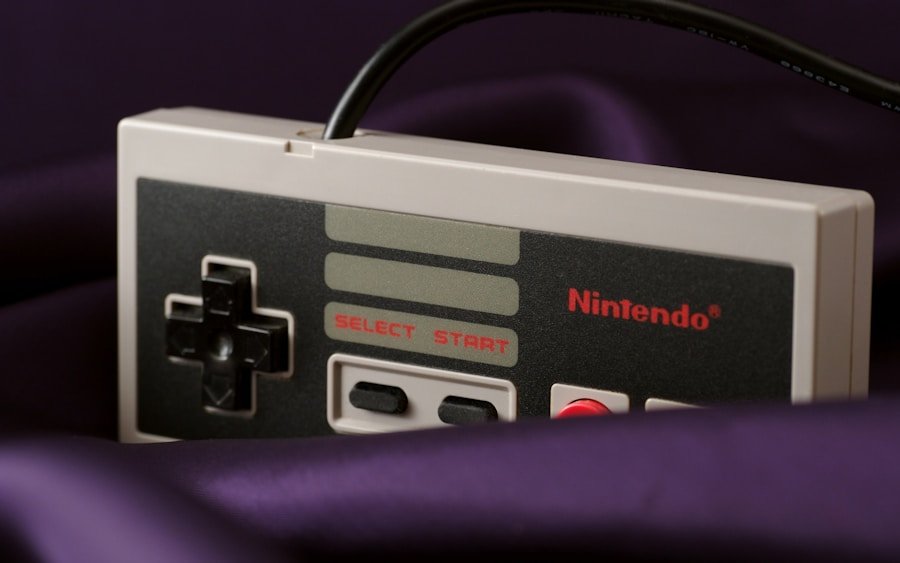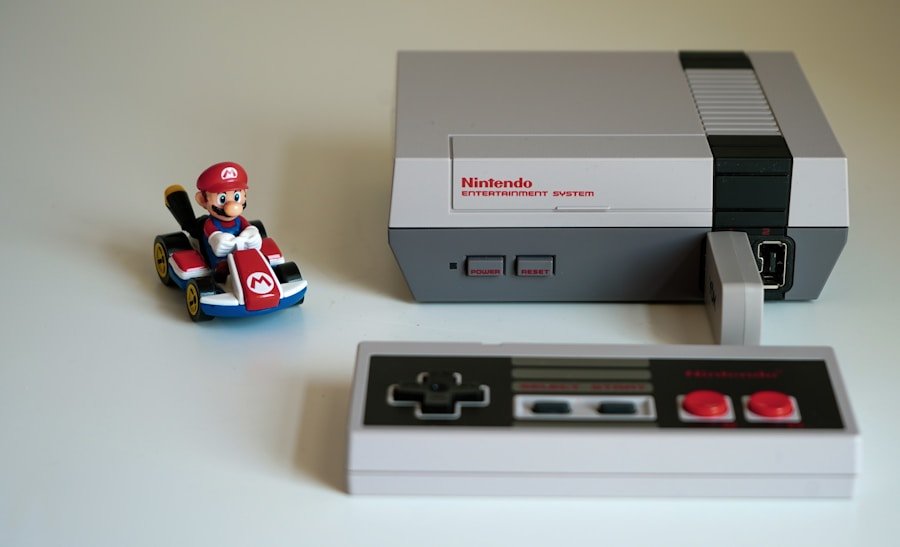Now Reading: Retro Consoles: Still Worth Buying in 2021
-
01
Retro Consoles: Still Worth Buying in 2021
Retro Consoles: Still Worth Buying in 2021

As I sit down to play my old Super Nintendo, I can’t help but feel a wave of nostalgia wash over me. The pixelated graphics, the chiptune music, and the simple yet engaging gameplay transport me back to my childhood.
The tactile feel of the controllers, the satisfying click of the buttons, and the unmistakable sound of a game cartridge sliding into place evoke memories of simpler times. For many of us, these consoles represent not just a form of entertainment but a cherished part of our personal history. The appeal of retro consoles goes beyond mere nostalgia; it taps into a collective memory shared by generations of gamers.
I find that discussing these classic systems with friends often leads to animated conversations filled with laughter and fond recollections. Whether it’s reminiscing about the thrill of defeating a particularly challenging boss or recalling the excitement of gathering around the TV for a multiplayer session, these shared experiences create a bond that transcends time. In an age where technology evolves at breakneck speed, retro consoles serve as a reminder of the joy and simplicity that gaming once offered.
Key Takeaways
- Retro consoles hold appeal due to the nostalgia factor, bringing back memories of childhood and simpler times.
- Retro games are still fun to play, offering a unique gaming experience and challenging gameplay that modern games may not provide.
- The collectibility and rarity of retro consoles make them desirable for gaming enthusiasts and collectors, driving up their value.
- Retro gaming is experiencing a resurgence, with a growing trend of gamers seeking out classic consoles and games.
- Retro consoles can fit into today’s gaming setup with compatibility and modern connectivity options, allowing for a seamless gaming experience.
The Value of Retro Games: Are They Still Fun to Play?
When I dust off my old Sega Genesis and pop in a cartridge, I’m often surprised by how engaging these games still are. Titles like “Sonic the Hedgehog” and “Street Fighter II” have stood the test of time, offering gameplay that remains fun and challenging even decades later. The mechanics may be simple compared to today’s standards, but there’s a certain charm in their straightforwardness.
I find that retro games often require a different kind of focus and skill, which can be refreshing in a world dominated by complex narratives and intricate graphics. Moreover, the accessibility of retro games adds to their appeal. Unlike many modern titles that require extensive tutorials or lengthy cutscenes, retro games often throw players right into the action.
This immediacy is something I appreciate, especially when I’m looking for a quick gaming session. The satisfaction of mastering a level or achieving a high score feels just as rewarding now as it did when I was younger.
Collectibility and Rarity: What Makes Retro Consoles Desirable

As I delve deeper into the world of retro gaming, I’ve come to appreciate the collectibility and rarity of certain consoles and games. Some systems, like the original Nintendo Entertainment System (NES) or the Atari 2600, have become iconic not just for their gameplay but for their historical significance in the gaming industry. The thrill of hunting down rare titles or limited-edition consoles adds an exciting layer to my gaming experience.
Each find feels like uncovering a piece of history, and I take pride in curating my collection. The rarity factor also plays a significant role in driving demand for retro consoles. As time goes on, fewer units remain in circulation, making them increasingly sought after by collectors.
I’ve noticed that certain games can fetch astonishing prices on auction sites, especially if they’re in mint condition or come with their original packaging. This trend has led to a vibrant community of collectors who share tips and stories about their finds. It’s fascinating to see how something as simple as an old game can hold such value, both sentimentally and financially.
The Resurgence of Retro Gaming: A Look at the Growing Trend
In recent years, I’ve observed a remarkable resurgence in retro gaming culture. It seems that more and more people are discovering—or rediscovering—the joys of classic consoles and games. This revival is evident in various ways, from the rise of retro-themed gaming cafes to the increasing popularity of retro game conventions.
I often find myself attending these events, where I can connect with fellow enthusiasts who share my passion for vintage gaming. This growing trend is not just limited to collectors; it also extends to game developers who are embracing retro aesthetics and gameplay mechanics in their new titles. Indie games inspired by classic designs are popping up everywhere, offering modern twists on beloved genres.
I appreciate how these developers pay homage to the past while creating something fresh and exciting for today’s gamers. It’s heartening to see that retro gaming is not just a fleeting fad but rather a movement that continues to evolve and thrive.
Compatibility and Modern Connectivity: How Retro Consoles Fit into Today’s Gaming Setup
One of the challenges I face as a retro gaming enthusiast is integrating my beloved consoles into my modern gaming setup. However, I’ve discovered that many retro consoles can still be enjoyed alongside contemporary systems with a few adjustments. For instance, using HDMI adapters allows me to connect my old systems to modern TVs without sacrificing too much quality.
This compatibility means I can enjoy my favorite classics without having to dig out an old CRT television. Additionally, many retro consoles have seen new life through re-releases and mini versions that come pre-loaded with classic games. These modern iterations often feature updated graphics and sound while maintaining the essence of the originals.
I find it fascinating how technology has made it possible for new generations to experience these timeless games without needing the original hardware. This blend of old and new allows me to share my love for retro gaming with friends who may not have had the chance to experience it firsthand.
Retro Console Modding and Customization: Exploring New Possibilities

As I delve deeper into the world of retro gaming, I’ve become increasingly intrigued by console modding and customization. The ability to modify my old systems opens up a realm of possibilities that enhance my gaming experience. From adding new features like HDMI output to installing custom firmware that allows for expanded game libraries, modding has become a creative outlet for many enthusiasts like myself.
I’ve also discovered a vibrant community dedicated to sharing modding techniques and resources. Online forums and social media groups are filled with tutorials and tips on how to breathe new life into aging consoles. This sense of community fosters collaboration and innovation, allowing me to learn from others’ experiences while sharing my own successes and challenges.
Modding not only enhances my gaming setup but also deepens my appreciation for the craftsmanship behind these classic systems.
Investing in Retro Consoles: Are They a Smart Financial Choice?
As I consider expanding my collection of retro consoles, I often ponder whether investing in these items is a wise financial decision. While some may view retro gaming as merely a hobby, I’ve come to see it as an investment opportunity as well. Certain consoles and games have appreciated significantly in value over time, making them attractive options for collectors looking to diversify their portfolios.
However, investing in retro consoles requires careful consideration and research. Not every item will appreciate in value; rarity, condition, and demand all play crucial roles in determining worth. I’ve learned that it’s essential to focus on items that resonate with me personally rather than solely viewing them as financial assets.
This approach ensures that even if their value fluctuates, I’ll still derive joy from owning and playing them.
The Future of Retro Gaming: What to Expect in the Coming Years
Looking ahead, I’m excited about what the future holds for retro gaming. As technology continues to advance, I anticipate even more innovative ways to experience classic games. Virtual reality adaptations or augmented reality experiences could breathe new life into beloved titles while preserving their core gameplay elements.
The potential for cross-generational gaming experiences is thrilling; I envision playing alongside friends who grew up with different consoles yet share a love for classic titles. Moreover, as more developers embrace retro aesthetics and gameplay mechanics, I expect to see an influx of new games inspired by the classics we hold dear. This fusion of old and new will likely keep the spirit of retro gaming alive for years to come.
As someone who cherishes these experiences, I’m eager to see how this vibrant community continues to evolve while honoring its roots. In conclusion, retro consoles hold an enduring appeal that transcends generations. From nostalgia and collectibility to modern connectivity and customization options, there’s no shortage of reasons why these classic systems continue to captivate gamers like myself.
As we look toward the future, it’s clear that retro gaming is not just a passing trend but a thriving culture that will continue to inspire joy and creativity for years to come.
If you’re a fan of retro consoles, you may also be interested in checking out this article on top mechanical keyboards for gamers. Just like retro consoles, mechanical keyboards have a unique appeal and can enhance your gaming experience. Whether you’re looking for a nostalgic gaming setup or just want to try something new, investing in a quality mechanical keyboard could be worth it.
FAQs
What are retro consoles?
Retro consoles are gaming consoles that were popular in the past, typically from the 1980s and 1990s. These consoles include systems like the Nintendo Entertainment System (NES), Sega Genesis, and Super Nintendo Entertainment System (SNES).
Are retro consoles still worth buying?
Yes, retro consoles are still worth buying for several reasons. They offer a nostalgic gaming experience, access to classic games, and can be a collector’s item for gaming enthusiasts.
What are the benefits of buying a retro console?
Buying a retro console allows gamers to experience classic games from the past, enjoy a simpler and more straightforward gaming experience, and collect vintage gaming hardware and software.
Where can I buy retro consoles?
Retro consoles can be purchased from various sources, including online marketplaces, retro gaming stores, and specialty retailers. They can also be found at gaming conventions and trade shows.
What should I consider before buying a retro console?
Before buying a retro console, consider the availability of games and accessories, the condition of the console, the cost of the system and games, and the compatibility with modern displays and technology.
Can retro consoles connect to modern TVs?
Yes, many retro consoles can connect to modern TVs using adapters, converters, or HDMI ports. Some retro consoles also have modern re-releases with built-in HDMI outputs for easy connectivity.



























